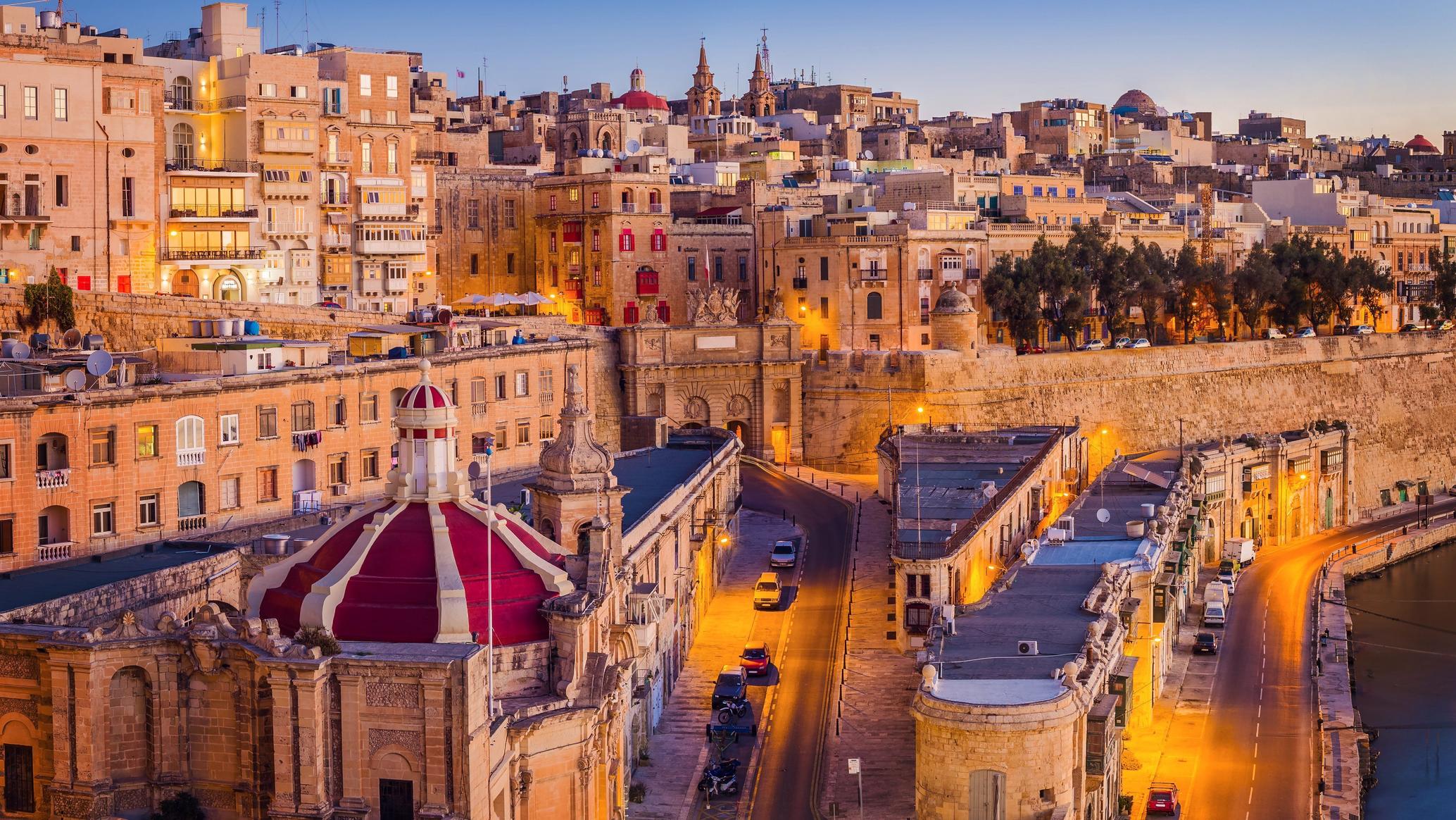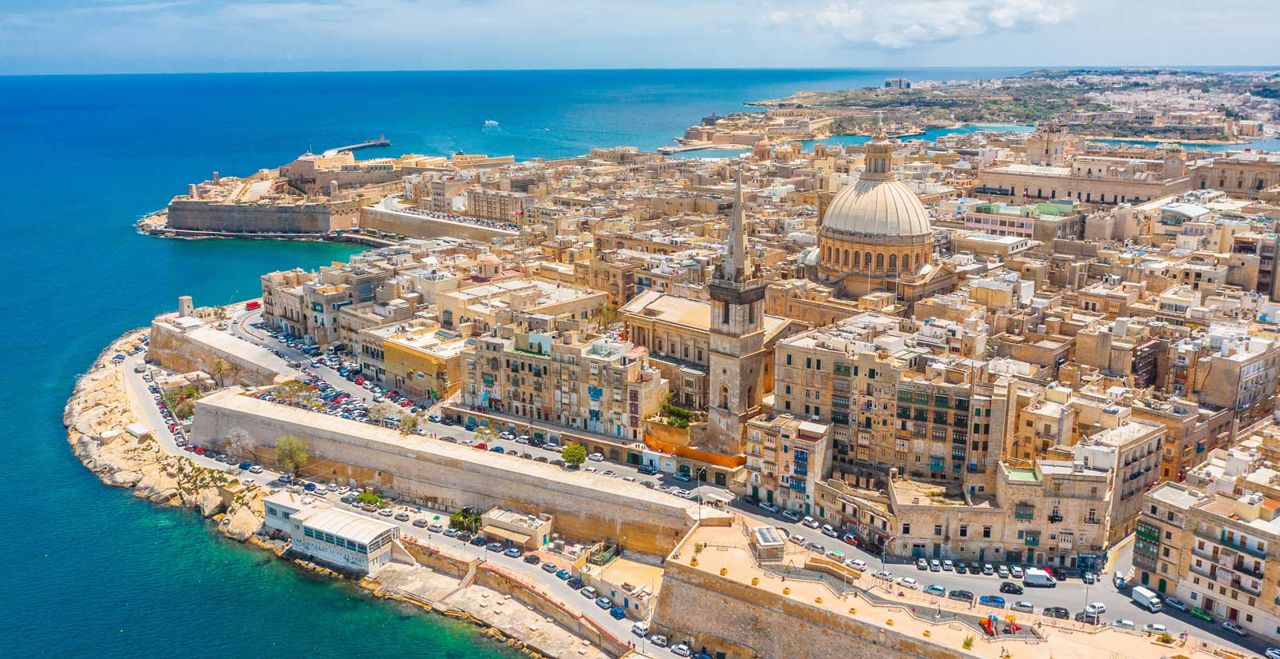



Valletta (or Il-Belt) is the tiny capital of the Mediterranean island nation of Malta. The walled city was established in the 1500s on a peninsula by the Knights of St. John, a Roman Catholic order. It’s known for museums, palaces and grand churches. Baroque landmarks include St. John’s Co-Cathedral, whose opulent interior is home to the Caravaggio masterpiece "The Beheading of Saint John." ― Google
Spring (March–May) – Warm, sunny, and less crowded; perfect for sightseeing and walking.
Autumn (September–October) – Still warm with fewer tourists and lower hotel prices.
Summer (June–August) – Peak season; lively, hot (~30°C), and ideal for festivals and beaches.
Winter (November–February) – Mild (12–17°C), quieter, and great for cultural visits.
By air:
Fly into Malta International Airport (MLA) — 15–20 minutes by car or bus to Valletta.
By ferry:
Regular ferries from Sliema and Three Cities to Valletta’s Grand Harbour.
Cruise ships dock nearby for easy access to the city.
St. John’s Co-Cathedral – Lavishly decorated baroque cathedral with Caravaggio’s Beheading of Saint John the Baptist.
Upper Barrakka Gardens – Panoramic views over Grand Harbour and the daily noon cannon firing.
Grandmaster’s Palace – Former seat of the Knights of St. John, now a museum and government building.
National Museum of Archaeology – Home to artifacts dating back to Malta’s Neolithic period.
Casa Rocca Piccola – A lived-in 16th-century palace with guided tours.
Manoel Theatre – One of Europe’s oldest working theaters.
Fort St. Elmo & National War Museum – Covers Malta’s military history, including WWII.
Walk the bastions and narrow alleys – Valletta is compact, beautiful, and walkable.
Watch the Saluting Battery – Daily cannon firing from Upper Barrakka Gardens at 12:00 and 16:00.
Hop on a boat tour – Explore the Grand Harbour, Marsamxett Harbour, or join a coastal cruise.
Attend a festival or concert – Especially during Carnival (Feb), Malta Jazz Festival (July), and Notte Bianca (Oct).
Take a day trip – Explore nearby Mdina, Blue Grotto, or Gozo by ferry or tour.
Luxury: Boutique hotels in restored palaces or with harbor views (e.g., The Phoenicia, Iniala Harbour House)
Mid-range: Stylish townhouses and guesthouses with breakfast included
Budget: Hostels and small inns in central or nearby districts like Floriana or Sliema
Unique stays: Heritage apartments with original stonework and modern amenities
Local specialties:
Rabbit stew (stuffat tal-fenek)
Pastizzi (flaky pastries filled with ricotta or peas)
Bragioli (beef olives)
Lampuki (dorado fish), kapunata (Maltese ratatouille)
Top spots:
Rampila, Legligin, Guze Bistro, Nenu the Artisan Baker
Seafront dining along Valletta Waterfront
Markets:
Is-Suq tal-Belt (Valletta Food Market) – A restored 19th-century market with gourmet stalls and eateries
Maltese is the national language, but English is widely spoken.
Deep Catholic traditions — churches are everywhere, and religious festivals are common.
Architecture blends Italian, British, Arabic, and baroque styles, reflecting Malta’s layered past.
Friendly, welcoming locals — don’t be surprised if they strike up a conversation!
Wear comfortable shoes – Valletta’s hilly, cobbled streets require good walking footwear.
City is pedestrian-friendly – Most of central Valletta is a car-free zone.
Try the ferry – A scenic and quick way to reach Sliema or the Three Cities.
Buy a Malta Pass – Covers major attractions and can save money on multi-day stays.
Tap water is safe, but bottled water is widely available.
Sun protection – Essential in spring and summer months.